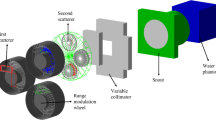Abstract
This work is the development of a MOSFET based surface in vivo dosimetry system for total body irradiation patients treated with bilateral extended SSD beams using PMMA missing tissue compensators adjacent to the patient. An empirical formula to calculate midplane dose from MOSFET measured entrance and exit doses has been derived. The dependency of surface dose on the air-gap between the spoiler and the surface was investigated by suspending a spoiler above a water phantom, and taking percentage depth dose measurements (PDD). Exit and entrances doses were measured with MOSFETs in conjunction with midplane doses measured with an ion chamber. The entrance and exit doses were combined using an exponential attenuation formula to give an estimate of midplane dose and were compared to the midplane ion chamber measurement for a range of phantom thicknesses. Having a maximum PDD at the surface simplifies the prediction of midplane dose, which is achieved by ensuring that the air gap between the compensator and the surface is less than 10 cm. The comparison of estimated midplane dose and measured midplane dose showed no dependence on phantom thickness and an average correction factor of 0.88 was found. If the missing tissue compensators are kept within 10 cm of the patient then MOSFET measurements of entrance and exit dose can predict the midplane dose for the patient.



Similar content being viewed by others
References
Van Dyk J, Galvin JM, Glasgow GP, Podgosak EB (1986) The physical aspects of total body photon irradiation, AAPM report No. 17
Planskoy B, Tapper PD, Bedford AM, Davis FM (1996) Physical aspects of total-body irradiation at the Middlesex Hospital (UCL group of hospitals), London 1988–1993: II. In vivo planning and dosimetry. Phys Med Biol 41(11):2327–2343
Bloemen-van Gurp EJ, Mijnheer BJ, Verschueren TA, Lambin P (2007) Total body irradiation, toward optimal individual delivery: dose evaluation with metal oxide field effect transistors, thermoluminescence detectors, and a treatment planning system. Int J Radiat Oncol Biol Phys 69(4):1297–1304
Lancaster CM, Crosbie JC, Davis SR (2008) In vivo dosimetry from total body irradiation patients (2000–2006): results and analysis. Australas Phys Eng Sci Med 31(3):191–195
Terron JA, Sanchez-Doblado F, Arrans R, Sanchez-Nieto B, Errazquin L (1994) Midline dose algorithm for in vivo dosimetry. Med Dosim 19(4):263–267
Ramaseshan R, Kohli KS, Zhang TJ, Lam T, Norlinger B, Hallil A, Islam M (2004) Performance characteristics of a microMOSFET as an in vivo dosimeter in radiation therapy. Phys Med Biol 49(17):4031–4048
Scalchi P, Francescon P, Rajaguru P (2005) Characterization of a new MOSFET detector configuration for in vivo skin dosimetry. Med Phys 32(6):1571–1578
Soubra M, Cygler J, Mackay G (1994) Evaluation of a dual bias dual metal oxide-silicon semiconductor field effect transistor detector as radiation dosimeter. Med Phys 21(4):567–572
Xiang HF, Song JS, Chin DW, Cormack RA, Tishler RB, Makrigiorgos GM, Court LE, Chin LM (2007) Build-up and surface dose measurements on phantoms using micro-MOSFET in 6 and 10 MV x-ray beams and comparisons with Monte Carlo calculations. Med Phys 34(4):1266–1273
Kassaee A, Xiao Y, Bloch P, Goldwein J, Rosenthal DI, Bjarngard BE (2001) Doses near the surface during total-body irradiation with 15 MV X-rays. Int J Cancer 96 Suppl:125–130
Kubo H, Russell MD, Wang CC (1982) Use of 10 MV spoiled x-ray beam for treatment of head and neck tumors. Int J Radiat Oncol Biol Phys 8(10):1795–1798
Piotrowski T, Adamska K, Malicki J (2007) Effect of scattered radiation in the total body irradiation technique: evaluation of the spoiler and wall dose component in the depthdose distribution. Nukleonika 52(4):153–158
Galvin JM, D’Angio GJ, Walsh G (1980) Use of tissue compensators to improve the dose uniformity for total body irradiation. Int J Radiat Oncol Biol Phys 6(6):767–771
Acknowledgments
The author would like to thank James Talbot, Allan Stewart, Christine Thompson, and Isla Nixon for all their help with proofreading of this paper.
Author information
Authors and Affiliations
Corresponding author
Rights and permissions
About this article
Cite this article
Satory, P.R. Calculation of midplane dose for total body irradiation from entrance and exit dose MOSFET measurements. Australas Phys Eng Sci Med 35, 101–104 (2012). https://doi.org/10.1007/s13246-012-0126-4
Received:
Accepted:
Published:
Issue Date:
DOI: https://doi.org/10.1007/s13246-012-0126-4




